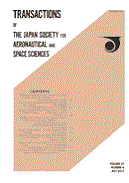60 巻, 5 号
選択された号の論文の9件中1~9を表示しています
- |<
- <
- 1
- >
- >|
-
2017 年60 巻5 号 p. 265-275
発行日: 2017年
公開日: 2017/09/04
PDF形式でダウンロード (1804K) -
2017 年60 巻5 号 p. 276-283
発行日: 2017年
公開日: 2017/09/04
PDF形式でダウンロード (5839K) -
2017 年60 巻5 号 p. 284-294
発行日: 2017年
公開日: 2017/09/04
PDF形式でダウンロード (781K) -
2017 年60 巻5 号 p. 295-302
発行日: 2017年
公開日: 2017/09/04
PDF形式でダウンロード (1641K) -
2017 年60 巻5 号 p. 303-311
発行日: 2017年
公開日: 2017/09/04
PDF形式でダウンロード (1828K) -
2017 年60 巻5 号 p. 312-319
発行日: 2017年
公開日: 2017/09/04
PDF形式でダウンロード (3305K) -
2017 年60 巻5 号 p. 320-326
発行日: 2017年
公開日: 2017/09/04
PDF形式でダウンロード (2339K)
Research Note
-
2017 年60 巻5 号 p. 327-330
発行日: 2017年
公開日: 2017/09/04
PDF形式でダウンロード (397K)
-
2017 年60 巻5 号 p. 331
発行日: 2017年
公開日: 2017/09/04
PDF形式でダウンロード (48K)
- |<
- <
- 1
- >
- >|
